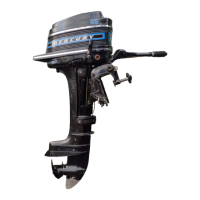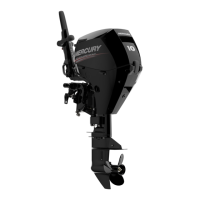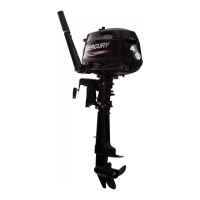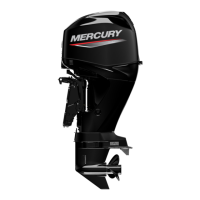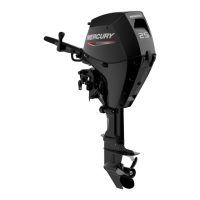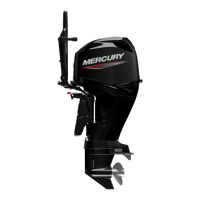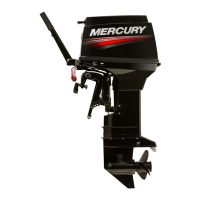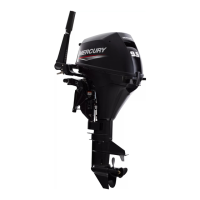IGNITION
Page 2A-8 90-828631R3 MARCH 1999
Ignition Description
The ignition system uses CDI (Capacitor Discharge Ignition). This system provides quick
voltage buildup and strong spark required for high power and high performance engines.
The CDI ignition system does not incorporate mechanically operated points, therefor mak-
ing this CDI unit virtually maintenance free.
As the flywheel rotates, electrical power (alternating current) is produced by the capacitor
charging coil. This power is rectified by diodes so that direct current voltage is utilized by
the ignition system. When the silicone controlled rectifier (SCR) is off, the D.C. voltage is
stored by the capacitor.
As the flywheel rotates 360° from the point at which charging of the system began, the trig-
ger coil produces voltage which is rectified and applied to the (SCR) gate.
This gate signal then turns on the (SCR) and the stored voltage is shorted to ground thru
the primary winding of the ignition coil.
The voltage discharged to the primary winding of the ignition coil causes a surge of high volt-
age to be induced in the secondary winding of the ignition coil. This induced voltage of suffi-
cient amplitude causes the spark plugs to fire.
The voltage stored by the capacitor holds the (SCR) on until the ignition coil current is dis-
charged. Then once the capacitor has discharged, the (SCR) turns off and the ignition cycle
is repeated.
Actuating the stop switch shorts the power being produced by the charge coil to ground. This
prevents charging of the capacitor and thus stops spark plug firing.
Ignition Component Description
Capacitor Discharge Unit (CDI)
a
a-Ignition CDI Unit (Capacitor Discharge Ignition)
Under normal operating conditions the CDI unit controls the following:
1. Control ignition spark timing by monitoring the trigger pulses.
2. Maintains an idle timing of 5° BTDC.
3. Advances spark timing quickly to 35° BTDC under hard acceleration conditions.
4. Limits rpm of the engine to 2000 rpm in the event of low oil pressure conditions.
5. Limits rpm of the engine to 2000 rpm in the event of overheat condition.
6. Limits rpm of the engine in the event of over-speed (@ 6200 rpm).
NOTE: The CDI unit controls all timing operations. There is no timing adjustment required
on this outboard engine.
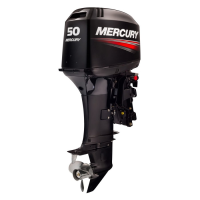
